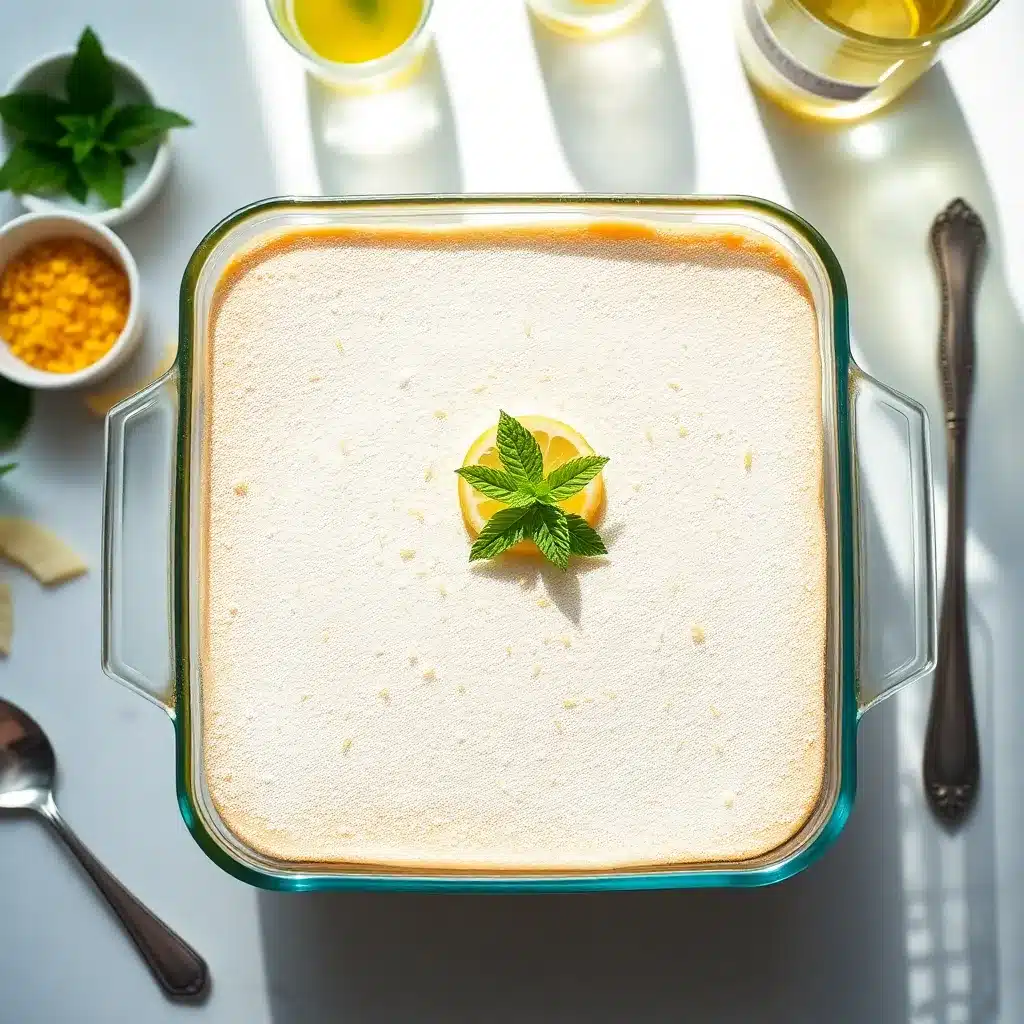Limoncello Tiramisu feels like sunshine disguised as dessert. First time I made it, my kitchen smelled like an Italian summer—zesty lemons, sweet cream, a little boozy whisper from the Limoncello bottle I’d been saving for “special”. And this one is special. It’s not the coffee-soaked tiramisu everyone expects; it’s brighter, cheekier, almost flirting with you from the plate.
Limoncello Tiramisu is a playful twist on the Italian classic. Instead of coffee and cocoa, it leans on lemon liqueur and citrus zest for its boldness. It’s lighter in personality but still rich enough to make you put the fork down for a breath between bites. The mascarpone cream? Dreamy, cloud-like, with just the right amount of tang to keep things interesting.
Limoncello Tiramisu has this secret weapon—temperature. Serve it chilled, and the lemon sings. Too warm, and the cream softens too far, the layers start arguing with gravity. This is one of those desserts that likes patience. And patience here pays deliciously.
Ingredients & Substitutions
Limoncello Tiramisu starts with the kind of ingredients that demand you treat them right. Quality mascarpone—not the watery imposters. Heavy cream with no “light” nonsense. And the Limoncello? If you can get one from the Amalfi Coast, even better, but a good homemade batch will make your soul smug.
- 1 ½ cups mascarpone cheese (full-fat, never low-fat—just no)
- 1 cup heavy cream, chilled
- ½ cup granulated sugar
- 4 large egg yolks, room temp
- ¾ cup Limoncello liqueur
- Zest of 2 large lemons (organic, if possible)
- 1 cup fresh lemon juice
- 1 ½ packs ladyfinger biscuits (about 30)
- 1 tsp pure vanilla extract
- Pinch of fine sea salt
- Fresh mint leaves (for garnish, optional)
Limoncello Tiramisu substitutions are possible but handle them gently. Dairy-free mascarpone is rare but exists—texture will be slightly less lush. Coconut cream can stand in for heavy cream, but it brings a tropical accent, so decide if you like lemon piña colada vibes. Gluten-free ladyfingers are decent now; just choose ones with enough structure to hold the soak without crumbling into lemon mush.
Limoncello Tiramisu benefits from fresh lemons over bottled juice—store-bought is flat, sour without fragrance. If Limoncello is unavailable, make a syrup with lemon zest, sugar, and vodka—it’s not quite the same, but it will still flirt with your palate in the right way.

Step-by-Step Instructions
Limoncello Tiramisu starts with the cream base. In a heatproof bowl, whisk egg yolks, sugar, and a splash of Limoncello. Set over a pot of barely simmering water (bain-marie style). Whisk constantly until the mixture thickens slightly—about 5–6 minutes. Don’t walk away, or you’ll end up with lemon-scented scrambled eggs. Cool slightly.
Limoncello Tiramisu cream layer builds next. Beat mascarpone in a mixing bowl until smooth. Add the cooled egg mixture and fold gently. In another bowl, whip the cream to soft peaks with vanilla and salt. Fold into the mascarpone mixture—slow, patient folds so you don’t punch the air out.
Limoncello Tiramisu soak is what makes or breaks it. Mix Limoncello with lemon juice in a shallow dish. Dip each ladyfinger quickly—like two seconds, not a swim. Too long and you’ll have soggy pudding; too short and you’ll have crunchy regret.
Limoncello Tiramisu assembly is the fun part. In a 9×9-inch dish, line soaked ladyfingers in a single layer. Spread half the mascarpone cream on top. Another layer of dipped ladyfingers, then the rest of the cream. Smooth the top, cover, and refrigerate at least 6 hours—overnight is better.
Limoncello Tiramisu garnish is optional but worth it. Just before serving, zest fresh lemon over the top, tuck in mint leaves, maybe even a thin lemon slice for drama. Don’t dust cocoa here—it’s a coffee tiramisu thing, not ours.
Cooking Techniques & Science
Limoncello Tiramisu relies on emulsification for its cream base. Whisking egg yolks with sugar over gentle heat dissolves the sugar crystals and thickens proteins without scrambling. This is why patience is not just nice—it’s necessary.
Limoncello Tiramisu structure depends on the soak. Ladyfingers are delicate sponges—too much liquid and they collapse into a wet slump. Quick dips let the liquid stay mostly on the surface, keeping bite and shape. It’s a balance between saturation and structural integrity.
Limoncello Tiramisu gets its lift from whipped cream’s trapped air. Overwhip and you get grainy lumps; underwhip and you lose the stability. Soft peaks mean when you lift the whisk, the cream folds over like a sleepy cat’s ear.
Limoncello Tiramisu isn’t baked, so ingredient quality speaks louder. That’s why fresh lemon zest is essential—its volatile oils perfume the cream without adding harsh acidity. This is also why you want organic lemons; pesticides cling to the skin, and you don’t want that in your dessert.

Serving & Pairing Suggestions
Limoncello Tiramisu loves contrast. Serve it in chilled glass cups for elegance, or rustic ceramic bowls for homely charm. Either way, keep it cold until the moment it meets the spoon—warm cream will betray you.
Limoncello Tiramisu pairs beautifully with crisp sparkling wines like Prosecco or Franciacorta. If non-alcoholic is your route, a sparkling lemonade with a mint sprig can play the same game.
Limoncello Tiramisu after a seafood-heavy meal? Chef’s kiss. It clears the palate yet feels indulgent. A little bitter limoncello on the side (straight, icy) seals the Italian summer vibe.
Conclusion
Limoncello Tiramisu isn’t just dessert—it’s mood therapy in layers. It proves tiramisu can be bright, cheeky, and sharp without losing its creamy soul. And it teaches you something—balance is everything. Sweet needs tart, rich needs light, and patience makes all of it sing.
Limoncello Tiramisu also rewards restraint. No chocolate, no coffee—just lemon, cream, and Limoncello doing a quiet, confident dance. And that’s why it works.
Limoncello Tiramisu will always have a seat at my table when I need a dessert that makes people pause mid-bite and smile without saying anything. Because sometimes, silence says the most.
FAQs
Can I make Limoncello Tiramisu ahead of time?
Yes, in fact you should. It tastes best after at least 6 hours in the fridge, preferably overnight, so the flavors marry and the texture sets.
What can I use instead of Limoncello?
You can make a quick lemon syrup with zest, sugar, and vodka, or use a non-alcoholic lemon cordial for a booze-free version.
Why did my cream turn runny?
It’s usually from over-soaking the ladyfingers or under-whipping the cream. Also, make sure mascarpone is cold when folding—warm cheese can loosen the mixture.
Can I freeze Limoncello Tiramisu?
Yes, but it changes texture slightly. Wrap tightly, freeze up to 1 month, and thaw in the fridge overnight before serving.

Olivia P. is a seasoned food blogger at Tastywink, sharing delicious, easy-to-follow recipes inspired by him passion for home cooking. With years of culinary blogging experience, he brings flavor, creativity, and a personal touch to every dish.
